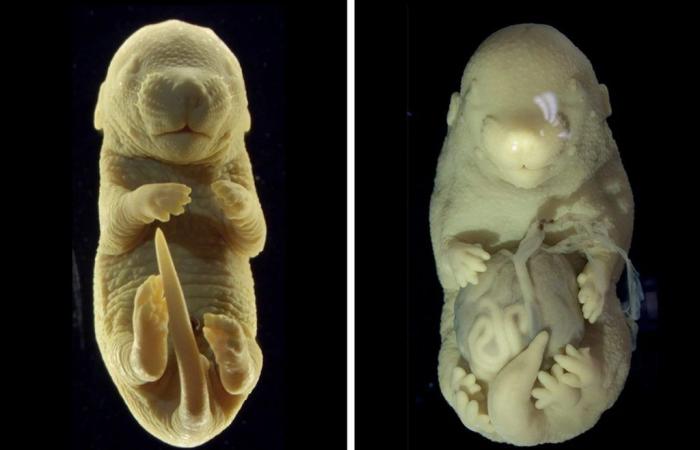A team of scientists from the Instituto Gulbenkian de Ciência, in Portugal, created an animal worthy of a science fiction film: one mouse with six pawswith its two extra limbs being located where its genitals.
This is not the only unusual characteristic of this strange rodent, as several of his internal organslike your intestine, protrude outside the abdomen. Accidentally created after genetic modifications, the animal was described in a scientific article published on March 20th in the magazine Nature Communications.
Scientists point out that the strange creature could reveal important information about Tgfbr1, a receptor protein that is particularly important in embryonic development. Initially, scientists were studying the role of this protein in the formation of the mouse embryo.
Scientists inactivated the Tgfbr1 protein gene halfway through development in rodent embryos to observe how this affected the formation of the animals’ spinal cord. To the team’s surprise, one of the test subjects developed extra limbs where there should have been genitals. “I didn’t choose the project, the project chose me”, says biologist Moisés Mallo, leader of the research, according to the magazine Nature.
The unexpected event showed that the Tgfbr 1 protein helps determine whether embryonic structures will develop into genitalia or legs. Furthermore, the molecule changes the way genetic material duplicates.
Inactivation of the Tgfbr 1 protein gene led to a change in the activity of other genes, thus resulting in the observed modification. Now, researchers want to establish whether this protein and similar structures can influence DNA organization in other systems, such as metastatic cancer.
The researchers are also investigating whether the mechanism is involved in the development of the reptilian hemipenis, a curious double genital organ that, in snakes, also develops from primary structures in place of limbs.






